While working as a gigging musician in the late '70s, Roger Kraft had a realization that fellow musicians might recognize: perhaps he should find another way to make some money.
At the time, the synthesizer industry was taking off. Analog classics from the likes of Moog and ARP still reigned supreme, but the digital synth revolution lay just over the horizon. Taking what he learned from his gigs, Roger started selling such instruments to pay his bills. By 1984, he launched his own shop, Kraft Keyboards, which would in time become Kraft Music. More than 30 years on, it's one of the United States' leading independent music stores.
Kraft's early success allowed Roger's son, Ben, to grow up with a front row seat to the synth industry. He was 10 when his dad incorporated Kraft Keyboards, and he spent much of his teenage years with the instruments that passed through the store.
"I was really, really fortunate that dad had a music store with synths," Ben says. "I'd have a different keyboard every couple months or a couple different keyboards, whatever was hot and new. I usually ended up getting to know the stuff a bit better than even he or even some of the other sales people knew it." He recalls his dad asking him to show off a particular new Roland to Talking Heads' Jerry Harrison, when Ben was just 14 or 15 years old and Harrison was in the store.
Of course, the digital revolution that hit synthesis hit the wider world too, and brick-and-mortar stores like Kraft Music soon had to compete within the internet era. Again, Ben was able to catch the wave early.
While studying business in college, he started selling synths online in early Usenet internet newsgroups like rec.music.makers. Seeing the promise of online sales, he dropped out of school to do it full-time. By 2001, he bought Kraft Music from his dad and has helmed the family business ever since.
Having had such a vantage point on the shifting tides of the synth market, we asked Ben if he'd be interested in talking about some of the standouts that have passed through Kraft Music. The ones he chose are "revolutionary, not evolutionary," he says, ones that made everyone really stand up and take notice at the time, paving the way for so many of the contemporary synths and other electronic gear being released today.
After reading, check out Kraft Music's Reverb shop, where you can find all of today's best synths, keyboards, and other music gear.
Oberheim OB-Xa
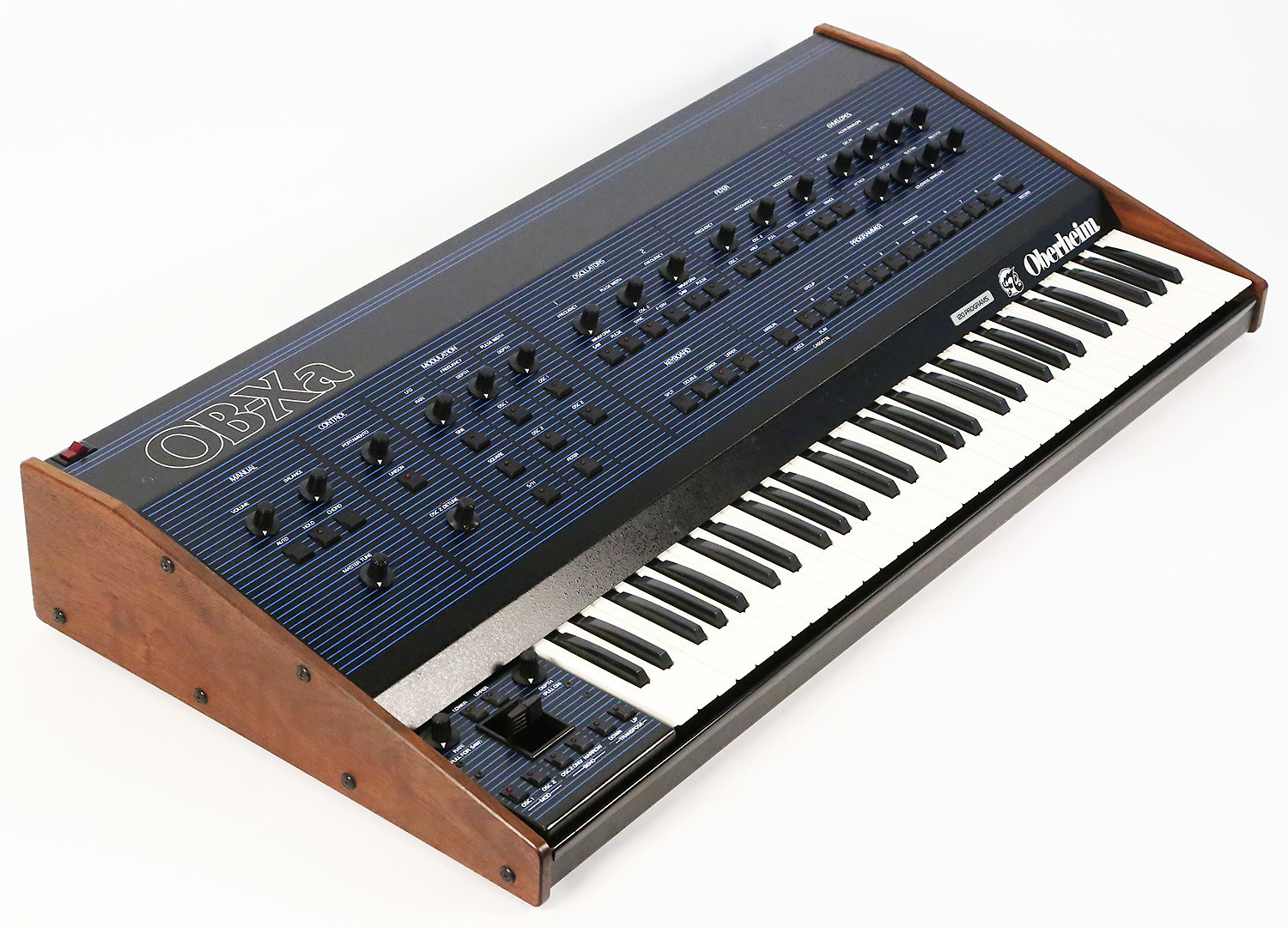
For the synths on his list, Ben starts with some of the earliest he remembers at the original Kraft Keyboards storefront.
"I remember, in the earliest days, in that first year in 1984, everybody was all about Van Halen and 'Jump.' The Oberheim OB-Xa was the thing. I can remember everybody would come in and try to play that song. [Laughs] But that was like a $4,000 synthesizer at the time, which is just crazy to me when you think about that, going 37 years back and thinking what would that be like in today's money. We just don't have synths that are that expensive anymore, for the most part."
Yamaha DX7
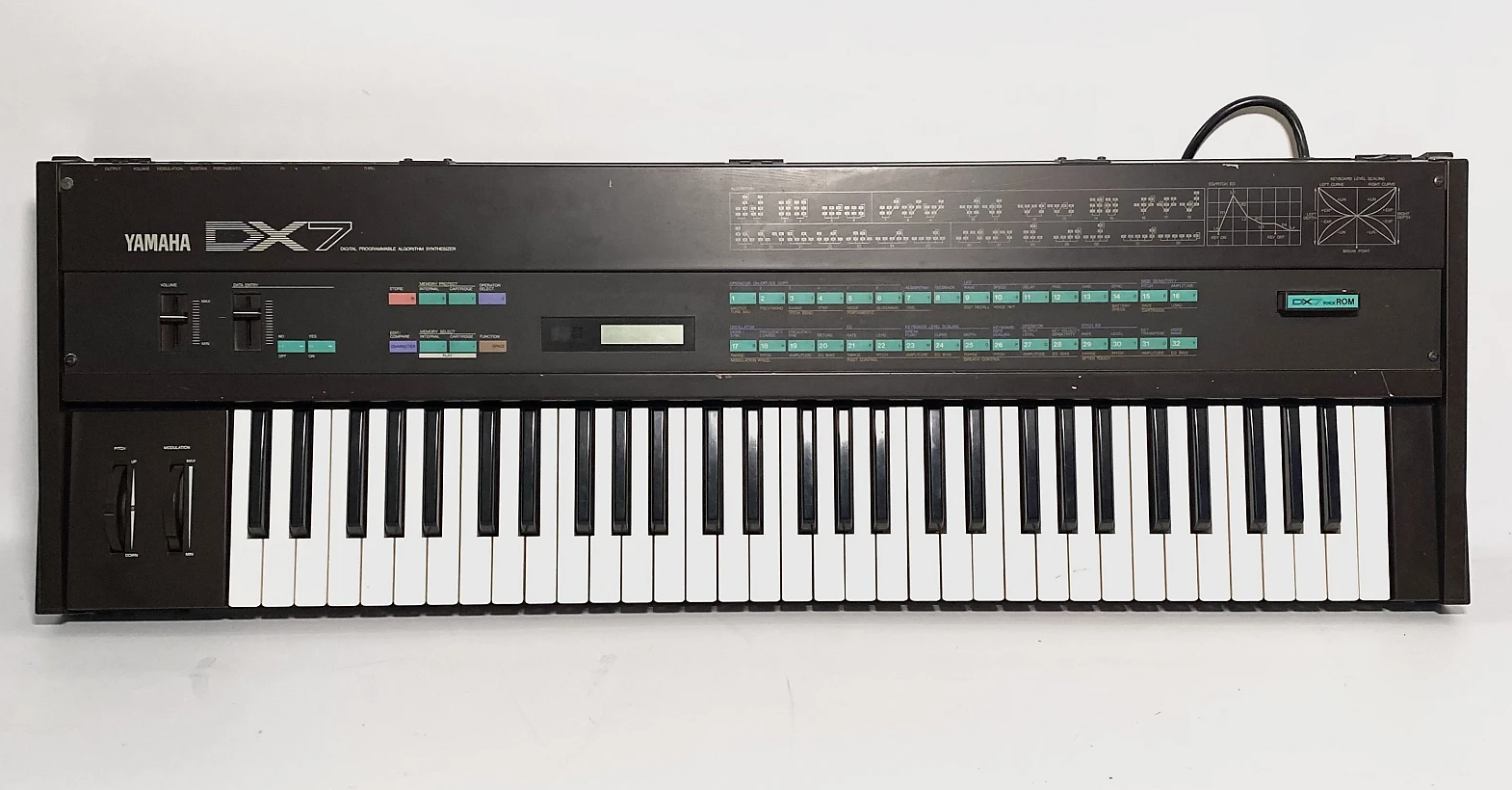
Released soon after the OB-Xa, the DX7 was almost the complete opposite: digital, easy-to-use, and affordable.
"The funniest thing about that is we were not a Yamaha dealer at that time. But it was so cool that my dad ended up going and buying one from another dealer, going, Shh, don't tell anyone." While Ben says they missed out on the very first year of DX7 sales, Kraft Music soon became a licensed Yamaha dealer, and no doubt sold quite a few more Yamaha synths.
Ensoniq Mirage

Ensoniq's Mirage was also released at this time, and it represented another first: the first affordable sampler.
"Everybody was interested in it," Ben says. "It was this foreign thing that you'd walk up to an instrument and there were no sounds. At the shop, we always had shoeboxes full of floppies. If you wanted to pull up a violin sound, you could do that. If you wanted to pull up some crazy drum set, you could do that."
Along with other samplers that followed (by Ensoniq, E-Mu, and others), the on-demand nature of floppy disk sound libraries felt like a whole new world to explore. "It felt like the library was unlimited. You could buy a library from Ensoniq or from a third-party who was making sounds for them. But you also had this whole thing like, Man, I can plug a microphone in and make my own sounds now," Ben says. "The whole idea that you had this unlimited palette of sounds just appealed to everyone."
Another first from Ensoniq came a few years later, the ESQ-1, a synth whose built-in sequencer was so powerful that the keyboard amounted to one of the very first workstations. "Obviously, workstations became a big time thing after that," Ben says.
Roland MKS-20
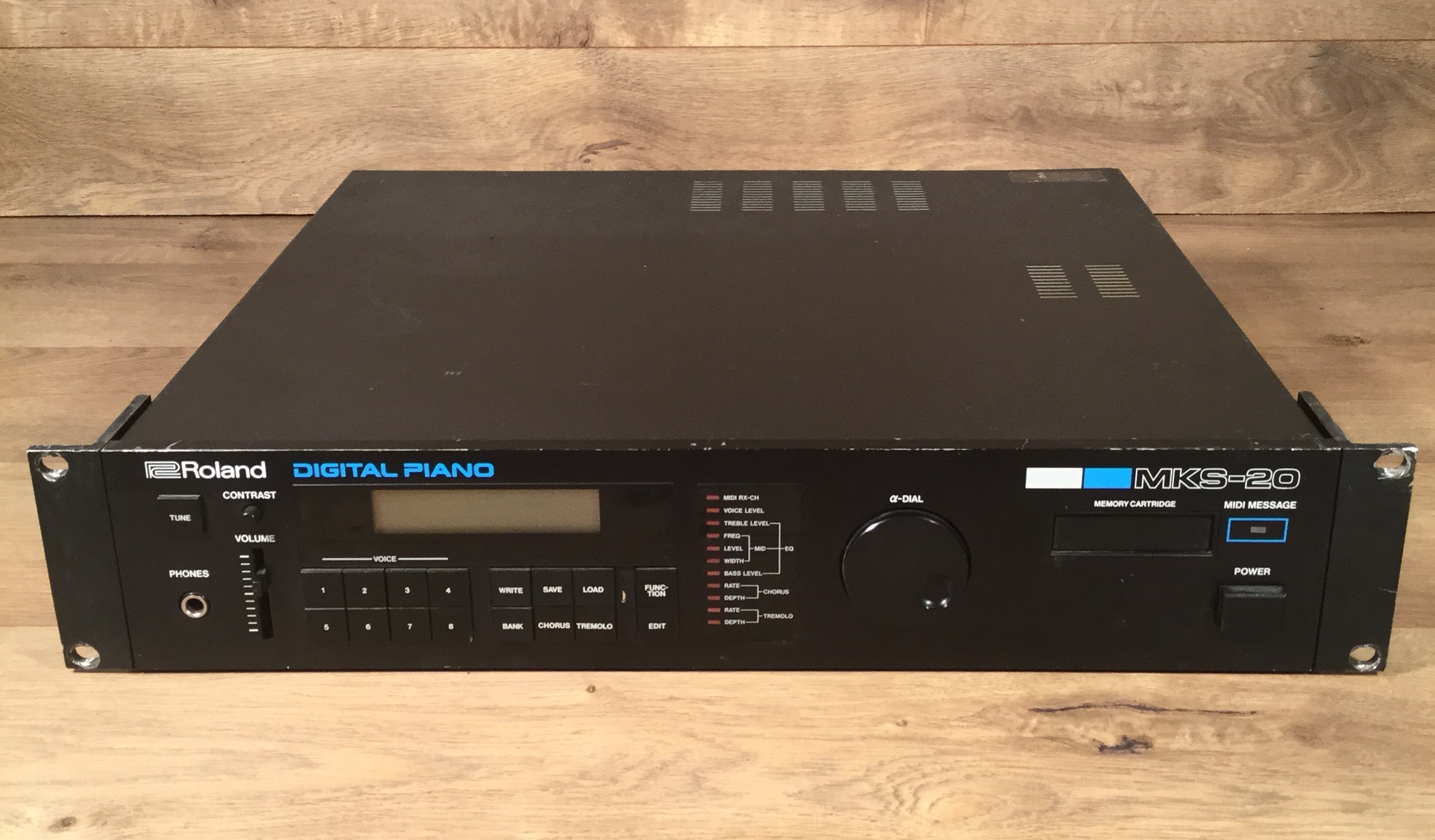
This rackmount synth module brought the sound of a grand piano into a two-space rack unit. "It became the [piano] sound of the '80s, like the Elton John sound" Ben says. But it also brings back a more personal memory.
"We had a five-foot grand piano at my house at the time," Ben says, because his mother was herself a musician and a piano teacher. One day, his dad came home with a MKS-20 and a MIDI controller, and the family conducted their own listening test.
Ben switched back-and-forth, playing the Moonlight Sonata on the piano and the MKS-20, while his parents sat in the next room. "Of course it didn't sound anything like it [laughs] but at the time it was close enough that I think my dad ended up convincing my mom to sell the acoustic piano," he says.
That same engine underpinned Roland's RD-1000, one of the first popular stage pianos, which has since grown into its own huge market.
Roland D-50
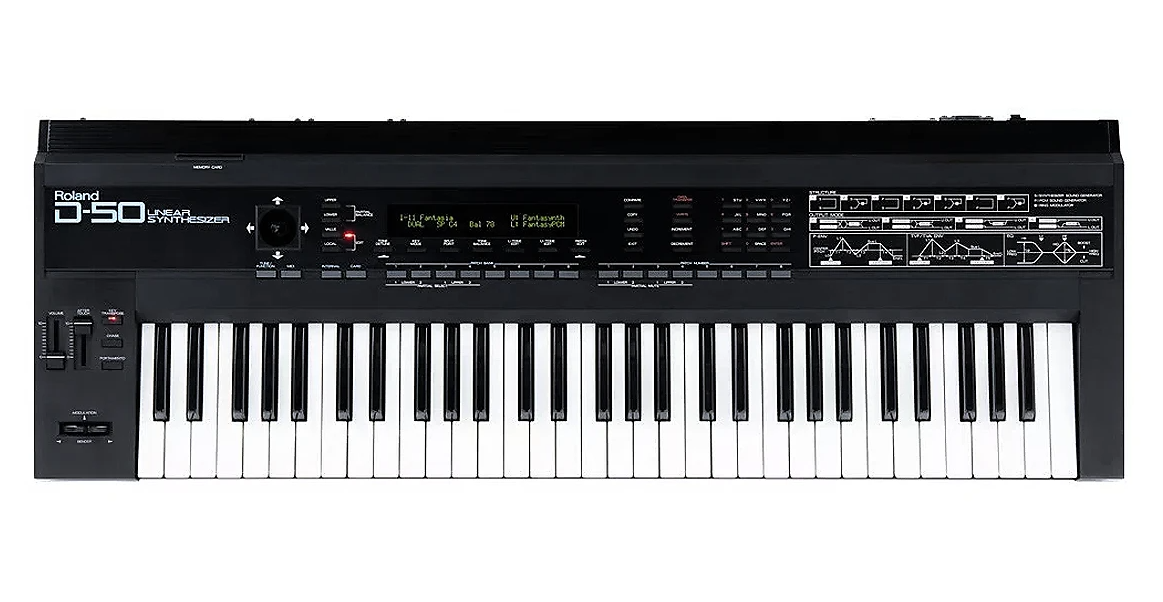
"The OB-Xa was cool, the DX7 was cool, and the ESQ-1 was cool, but it was all dry," so you'd often have to connect it to some other effect or processor to get an album-quality sound, Ben says. Not so with the D-50. Roland's stroke of genius was adding an onboard reverb effect. "All you had to do was turn it on, and it made it sound like a produced record. Everybody had to have one of those."
"That changed everything, just adding effects," Ben says. "Nowadays, we don't even think about that anymore—everything sounds great right out of the box, but the D-50 was huge."
Korg M1
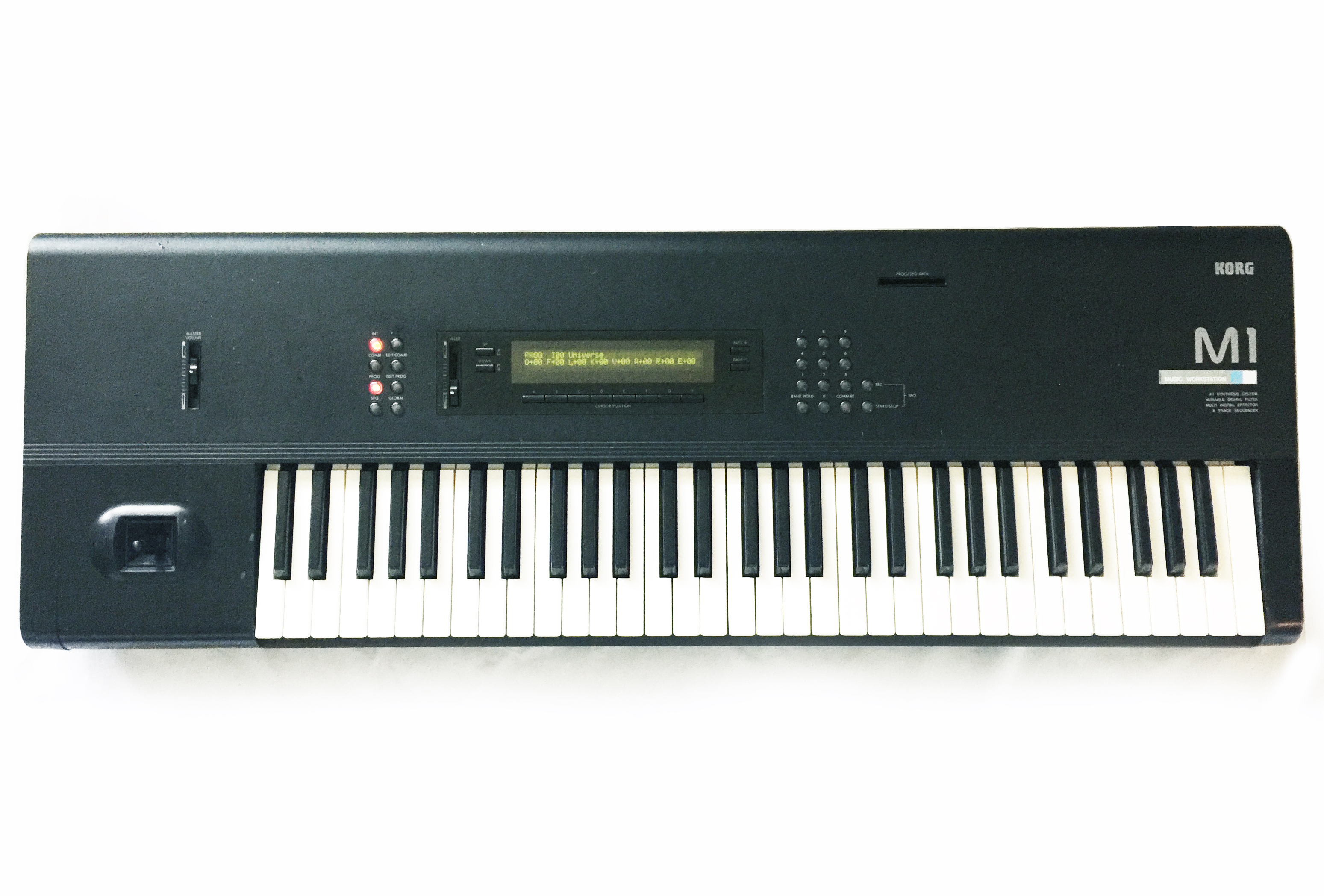
One of the most important keyboards of the past 40 years, the M1 was a next-level workstation that cleared the path for many more to come. "After that, it went M1, the T series, 01/W, the Trinity, then the Triton, then Kronos, now Nautilus—every one of those just got better and better and better," Ben says. And it wasn't just Korg: "It was a race between Korg, Yamaha, Roland, and Kurzweil for that matter."
As laptops continued to get more capable across this same span of years, Ben says he and others wondered if keyboard workstations would become obsolete. "Are guys just going to be touring with laptops?" he remembers thinking at the time. "Well, the answer is yes and no. Sure, people are going to be touring with computers, and they do it all the time, but a flexible workstation with a solid operating system still has a place."
E-Mu Proteus

"A single-space rack for a thousand bucks. At the time, it had all the great E-Mu stuff," Ben says. "E-Mu had great stuff before that—like the E series samplers—but everything was so expensive." Packing so many great sounds in one reasonably priced module put the E-Mu sound within reach.
"I can remember it was like a revolving door going into the little studio where we had the Proteus," Ben says. "Everybody had to hear that demo. I probably hummed that demo while going to sleep for years." But the Proteus was just one of many rackmount modules at the time that tried to save synth players' space.
"At the time, every brand had a different sound. And of course chips and memory were at a premium," he says. "So if you really wanted all the sounds, you either had to have nine keyboards, or you had two or three keyboards and a bunch of racks. It was great for business, but terrible for the consumer, because you had to spend a lot of money."
One related standout is the JD-990, a synth module from a few years later that still commands a good bit of money on the used market. The rack version of the JD-800 synth, the JD-990 crucially "also had room for the Roland Expansion Cards—which became a big thing for more than a decade," Ben says.
Alesis Quadrasynth
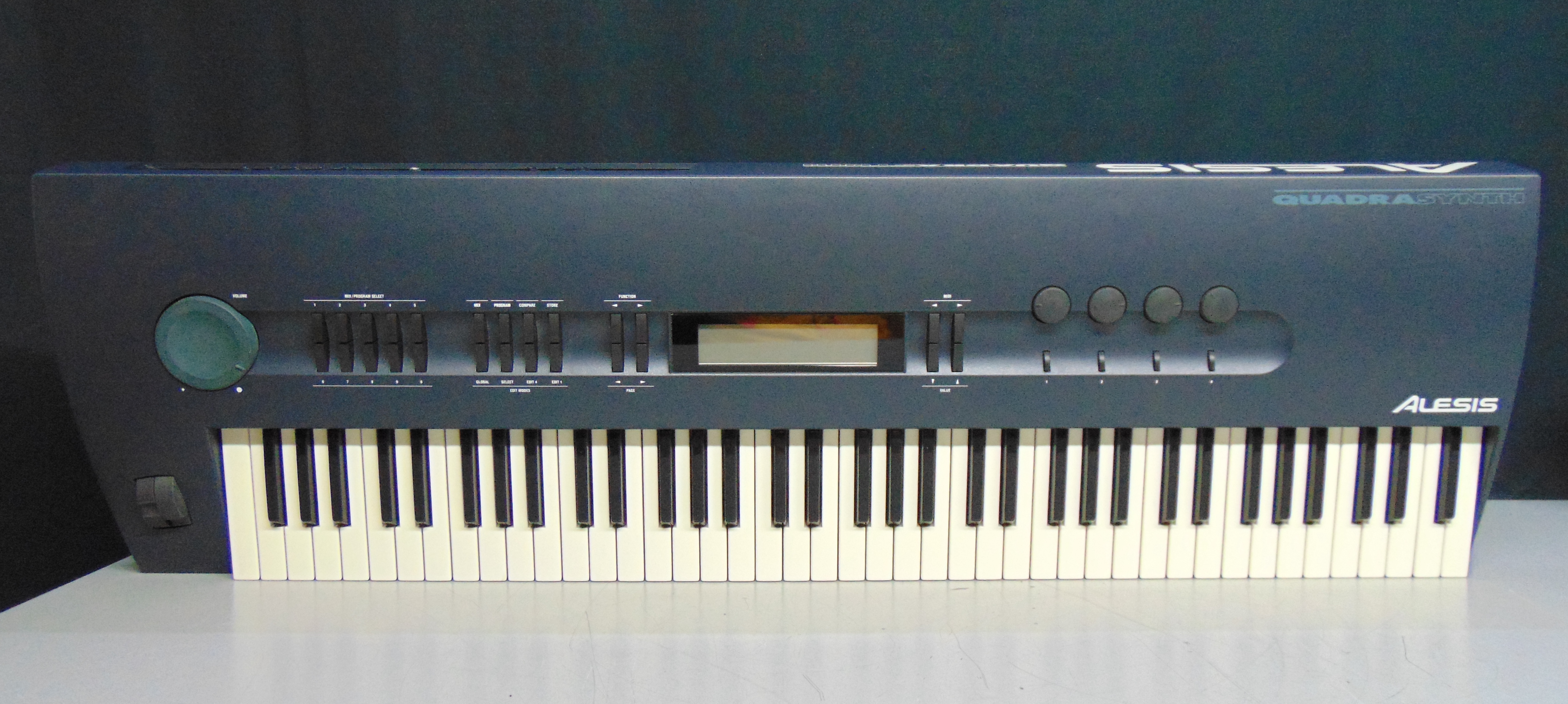
Alesis' first keyboard, the Quadrasynth, raised the bar of polyphony. "It was the first synth that had 64 notes of polyphony, which blew everything away—nothing had that kind of polyphony at the time," Ben says. But even more so, it's a big part of Ben and Kraft Music's history.
"It's a footnote for me because it was a keyboard that not many people here in Milwaukee understood, and that was the first time that I started selling online," Ben says. "So it was one of the first synths that we started shipping to people who couldn't find it anywhere else or couldn't find anybody who knew anything about it. So more of the thing that leaps out to me, as I'm thinking, Oh yeah, the Quadrasynth—there's the polyphony side, but it also marks a time in our business life."
Nord Lead
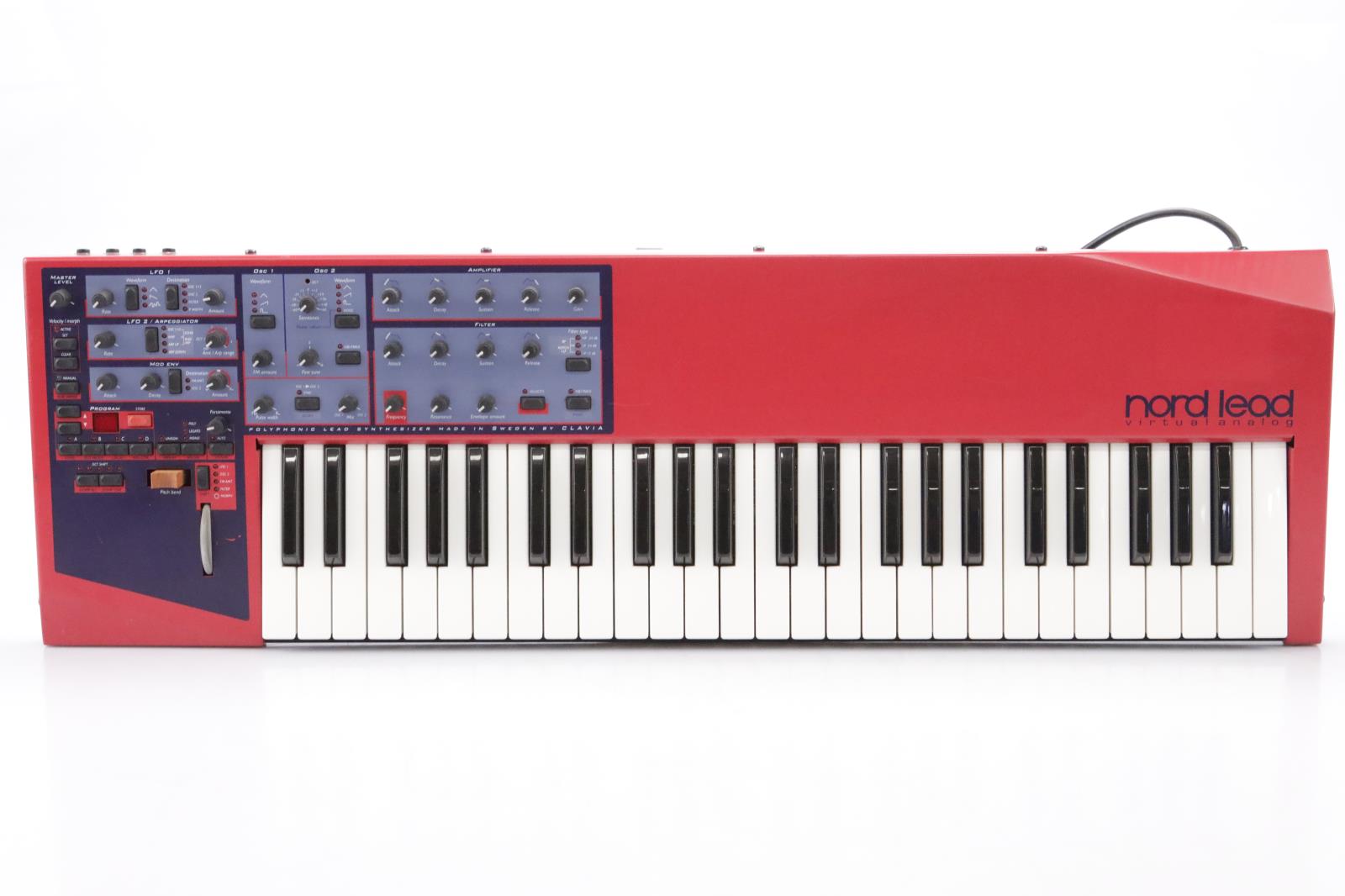
The particular shade of red on a Nord is now well-known, with Nord keys and modules appearing on pro stages and in studios all across the world. The first was the Lead.
"The Nord Lead was in 1994, and that in itself created a whole category that we're doing today: virtual-analog and everything else, and of course it was the first red keyboard that came, where everybody was like, What the heck is that thing? Now you see them all over the place," Ben says.
Roland MC-303

In the same way that Nord launched its virtual take on analog classics, other companies in the mid-'90s started down the same path. Until then, "no one wanted to have anything to do with analog, once digital came. Of course, all of us wish we had kept whatever analog keyboards we had had during the early '80s or the '70s, since they're worth a fortune now."
"The MC-303 was like the first groovebox that started Roland's long march to reliving the TR-808 and TR-909 days," Ben says. He remembers the time of the release as being "one of the last really strong [brick-and-mortar] retail days that we had, where we had a Roland clinic and people were just coming in. I remember having them stacked." The nostalgia for the Rhythm Composers of the early '80s was just beginning.
Alesis Andromeda

Ben describes the Alesis Andromeda as one of the last great analog polysynth. Released in 2001, it has an interface more akin to a spaceship control panel. Unfortunately, it arrived just as the company went bankrupt, before a new owner expanded into other types of music gear.
"They didn't make that many, it was like their last hurrah," Ben says. "The thing was just a tank."
Casio PX-100 Privia
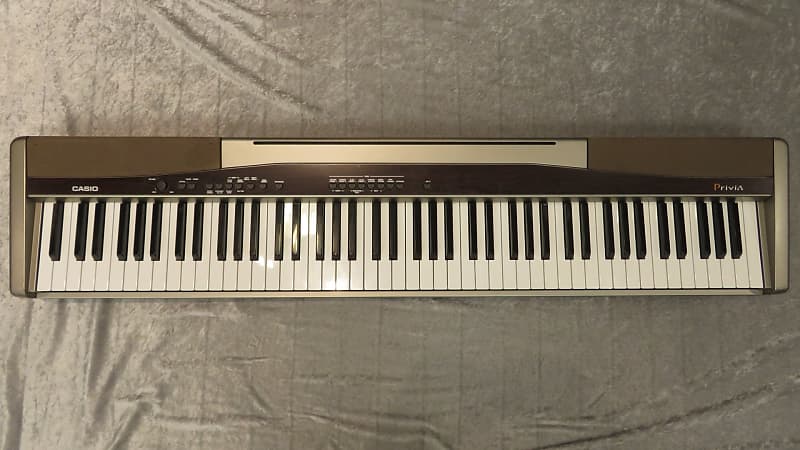
Though not a synthesizer, Ben sees the PX-100 Privia as the start of another important category of keyboards: "lightweight, high-quality, low-cost keyboards that now gigging players all over the place use."
"Casio had some great synthesizers—the CZ-101 and all that kind of stuff—but people kind of looked at Casio as a calculator company or a watch company. Now, serious, serious players will buy a Casio keyboard," Ben says. "Right out of nowhere, they came out with this full, 88 weighted keyboard that was under 30 pounds. Nobody could figure out how they did it. It was 500 bucks and sounded good." The PX line is still going strong, and they sound even better today.
Korg Karma

Last on Ben's list of standouts is the Korg Karma. With its red body, it almost has a Nord-like look, but it's more akin to the Triton. What makes it unique is the Karma arpeggiator, which gives players a complex, hands-on way of controlling arp's rhythms and harmonies, along with additional effects.
"It was arpeggiation that didn't just repeat exactly what it was doing. If you played a chord, it would arpeggiate and throw in all kinds of random stuff. The keyboard almost felt alive," Ben says. "And they paired that with almost everything that was built into the Triton workstation."
What synths of today will stand out to you tomorrow? Check out Kraft Music now to find out.
